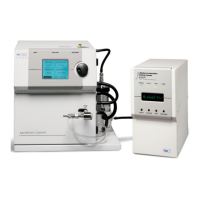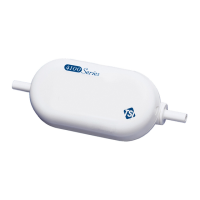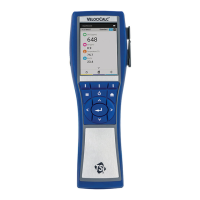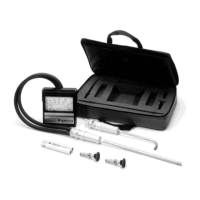Troubleshooting 7–3
5. Observe the gauge reading. The reading should not change by
more than 0.1 in. Hg in 5 minutes.
6. If the Bypass flow plumbing does leak, follow the steps below
under “Isolating Leaks
.”
To leak-check the Aerosol flow path, follow these steps:
1. A neutralizer must be installed. If an impactor is installed, the
pressure taps should be connected to the ports on the side of
the Classifier or connected together (or plugged).
2. Plug the AEROSOL INLET port on the front of the Classifier or
the Inlet to the Impactor if you have one installed.
3. Connect a pressure gauge or manometer between the
POLYDISPERSE FLOW port and a leak-tight valve. The valve
should be closed.
4. Connect the valve to a vacuum source or a vacuum pump
capable of drawing 18 in. Hg vacuum.
5. Turn on the vacuum pump or vacuum system and slowly open
the valve. Allow the vacuum gauge reading to become stable
and then close the valve.
6. Observe the gauge reading. The reading should not change by
more than 0.1 in. Hg in 5 minutes.
7. If the Aerosol flow path plumbing does leak, follow the steps
below under “Isolating Leaks
.”
Isolating Leaks
1. Isolate the leak by wetting suspected joints with clean isopropyl
alcohol while the system is under vacuum. The alcohol will be
drawn into a leaky joint and evaporate.
2. After isolating the leak, repair it (usually by greasing or
replacing an O-ring, or by sealing a fitting).
3. Blow clean, dry air through the repaired section to evaporate
and remove any leftover alcohol.
4. If you cannot find the leak, or cannot repair the leak, please
contact TSI for assistance.
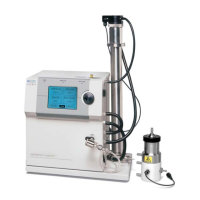
